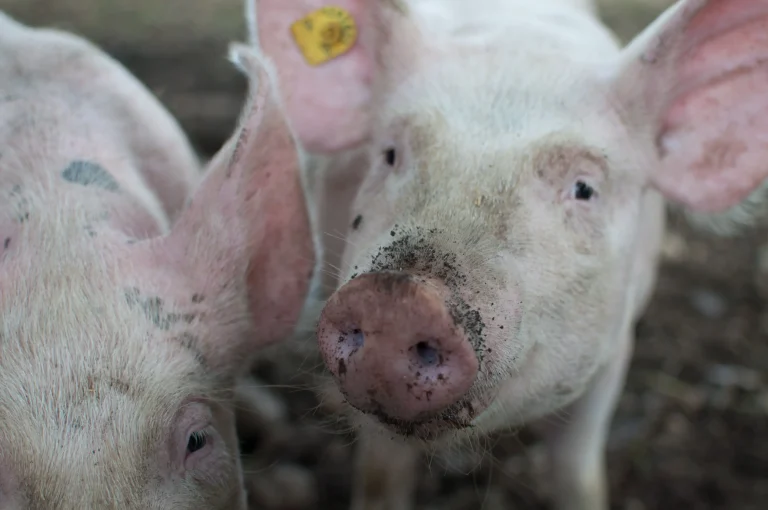A synthetic community of four soil-dwelling Gram-positive bacteria has been shown to significantly reduce aphid infestations and boost pepper yields, without the downsides of traditional chemical control.
Scientists in South Korea say a specifically engineered microbial mixture – referred to as a SynCom – can trigger pepper plants’ natural defences and protect against the green peach aphid (Myzus persicae), a notorious sap-sucking pest.
The SynCom also improved resistance against bacterial spot disease caused by Xanthomonas axonopodis pv. vesicatoria and increased both fruit number and weight under field conditions.
Microbial cooperation key to pest protection success
In research published in Frontiers in Plant Science, the scientists explain that crucially, this is not just a case of multiple microbes working individually.
The protective effect emerged only when all four species – Brevibacterium frigoritolerans, Bacillus niacini, Solibacillus silvestris, and Bacillus luciferensis – were applied together. This combination triggered the de novo production of 1-nonanol, a volatile organic compound not detected when the bacteria were grown separately or in smaller groupings.
This is the first evidence that a specific microbial consortium can produce a volatile compound in the rhizosphere that deters insect pests, said lead author Dr Choong-Min Ryu from KRIBB (Korea Research Institute of Bioscience and Biotechnology).
The synergy of the four bacteria is essential, as none of them can produce enough 1-nonanol alone to achieve the same effect, he said.
The field trials, conducted in Nonsan, South Korea, showed that SynCom application reduced aphid severity scores by 1.5-fold compared with untreated controls.
Meanwhile, the positive control treatment using benzothiadiazole (BTH), a chemical plant defence activator, reduced aphid levels more sharply – by 2.7-fold – but caused growth penalties and reduced fruit yield.
In contrast, SynCom-treated plants saw a 1.7-fold increase in fruit weight and a 1.5-fold increase in fruit number per plant, compared to controls.
“Unlike BTH, SynCom triggers the plant’s immune responses without stunting growth,” the researchers noted.
Gene expression analysis showed that SynCom activated both salicylic acid (SA) and jasmonic acid (JA) signalling pathways, key components in plant defence.
Treatment with pure 1-nonanol also upregulated SA-linked defence genes and cut aphid populations by up to 48.3% at peak effect – reinforcing the link between this volatile and the plant’s induced resistance.
Interestingly, while 1-nonanol was also produced in small amounts by Bacillus luciferensis alone, the quantities were 5 to 13 times lower than in the full SynCom mixture. This suggests microbial cooperation plays a critical role in metabolite synthesis.
“This finding supports the concept of microbial syntrophy – the idea that certain strains only perform specific functions effectively when paired with others,” the authors explained.
Potential beyond peppers: tomatoes and future crops
While the study focused on peppers, the team previously demonstrated that the same SynCom can protect tomatoes from bacterial wilt. This suggests potential for broader crop applications.
However, further work is needed to assess long-term field efficacy and the interactions between SynCom and native soil microbiota.
As concerns grow over pesticide resistance and environmental impacts, this research adds to the growing body of evidence supporting microbiome-based crop protection.
Microbial consortia like this could be a cornerstone of future sustainable agriculture – provided we understand and manage the complex interactions they rely on, Dr Ryu said.
Key takeaways
- A four‑strain synthetic bacterial community reduced pepper aphid infestations by 1.5‑fold in field trials.
- The mixture triggered 1‑nonanol production and activated plant SA and JA defence pathways without stunting growth.
- Compared to chemical activators, SynCom increased pepper fruit weight (1.7×) and number (1.5×) per plant.
- The full microbial blend was essential—partial mixes failed to generate effective volatile defences.
- Results highlight strong potential for broader use in other crops like tomato, pending further field testing.
If you’re interested in nature-based crop protection, you might also like our stories on biotech solutions for mycotoxin control and low-cost biopesticides for citrus pests.
Want to read more stories like this? Sign up to our newsletter for bi-weekly updates on sustainable farming and agtech innovation.










